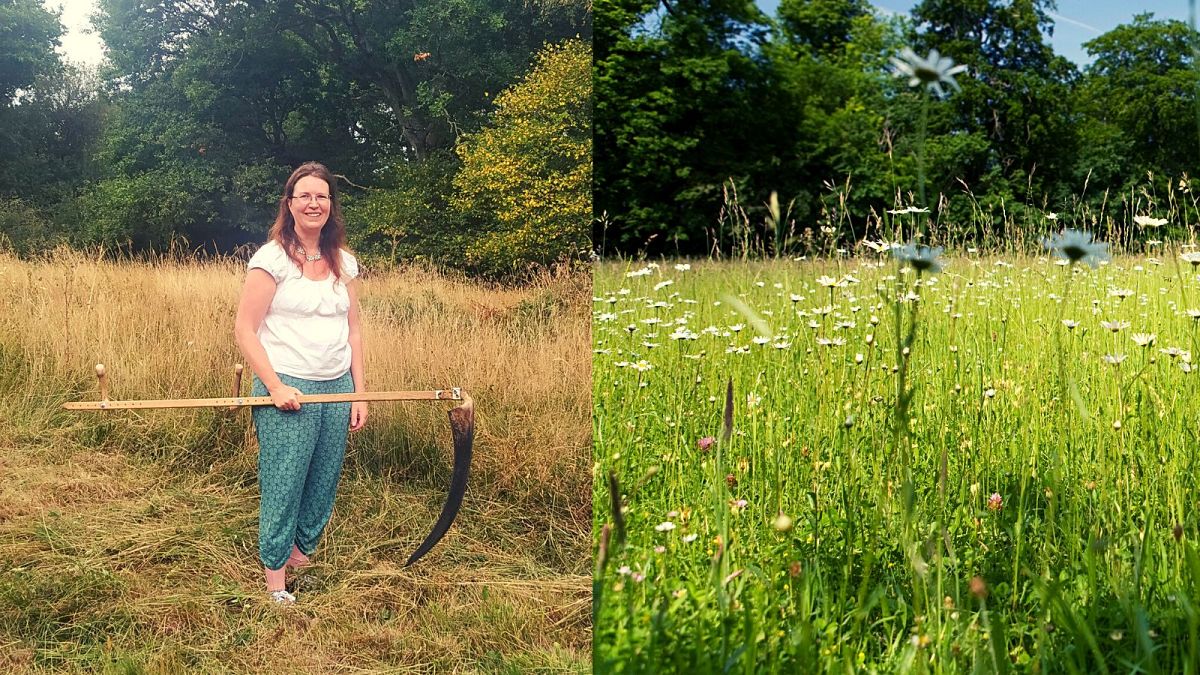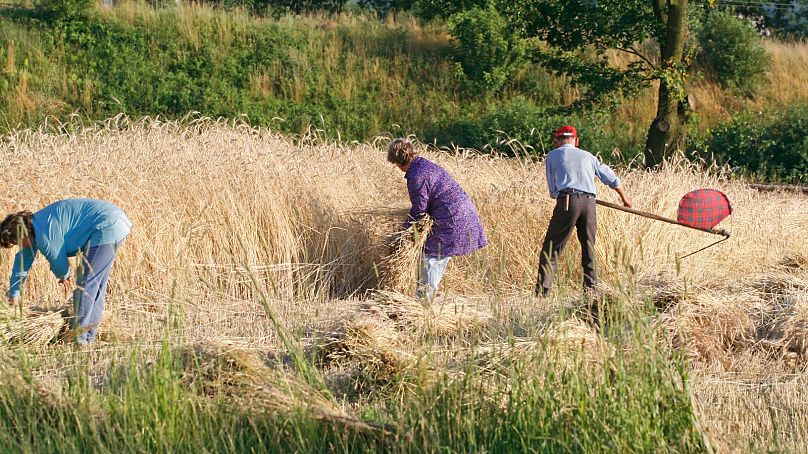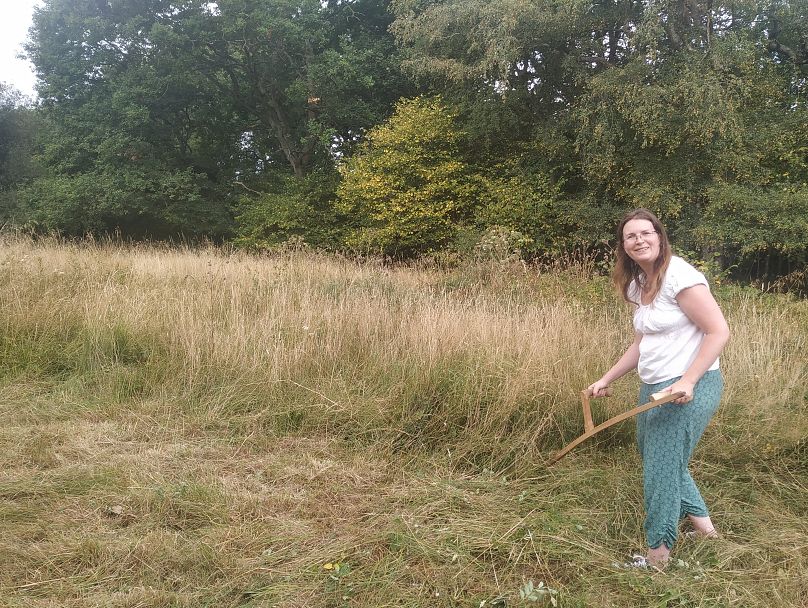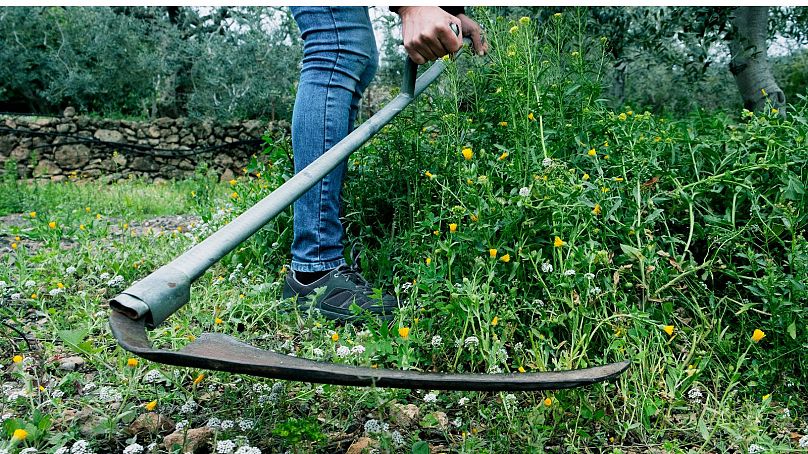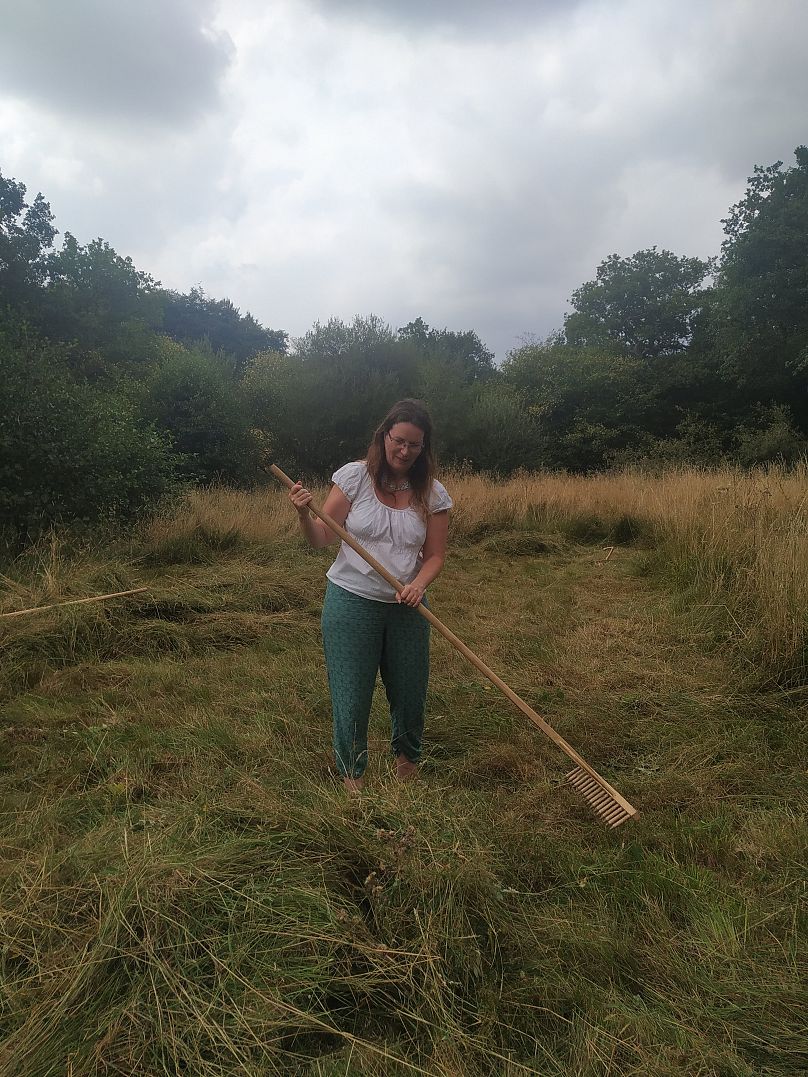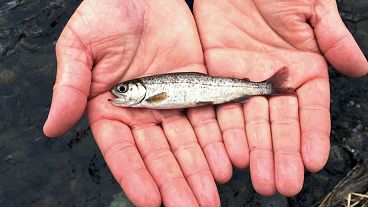Move over 'no-mow May' - could September scything be the next best eco trend for improving biodiversity and wellbeing?
Could a long-lost rural skill be a cut above when it comes to working on wildflower meadows?
Fans claim that the rhythmic elements of scything mirror yoga and tai chi, promoting mindfulness, better breathwork and good sleep, while reconnecting with nature.
Swapping out noisy, fuel-guzzling machinery for a simple blade has got to be a win for wildlife too, giving insects and larger animals the chance to move away while mowing takes place.
Eager to find out more, I signed up for a day-long scything session with Leicestershire and Rutland Wildlife Trust in the UK last month.
Why is scything making a comeback in the UK?
The centuries-old practice has fallen out of favour in Britain. But the trust is undertaking a three-year project, investing in scythes, recruiting volunteers and identifying grasslands that are hard to reach with machinery or need a different approach to protect their biodiversity.
It's important to keep meadows managed so that dominant species don't choke out the others.
"These islands are blessed with one of the best grass growing climates in the world, so grassland management has always been a necessary activity - whether for feeding livestock through the winter by haymaking, or for keeping on top of lawns and wayside weeds,” explains the Scythe Association of Britain and Ireland.
"Scythes are once again being used in public parks and gardens, wildlife reserves, stately homes, allotments and meadows throughout these islands. The scything revival is flourishing, not least because of its benefits to health - fresh air and exercise, the quiet enjoyment of nature, and the sense of satisfaction that comes from real work done well."
With scything still firmly on the agenda in some European countries, those leading the British reaping renaissance have turned to our continental comrades in Austria, Romania and the Pyrenees to relearn this lost skill.
Making ready to mow
Mowing maestro Richard Brown, chairman of the Scythe Association, is on hand to teach us all that he has learnt since he was bitten by the blading bug 15 years ago.
He started scything after researching how best to manage the wildflower meadows he helped to create in his professional capacity as a seed expert.
I'll admit that I was sceptical that we would need six hours to learn how to scythe. But I quickly found out that it's not just picking up a tool and swinging it about.
First of all, we needed to assemble the equipment. In the olden days, scythes were bespoke to an individual, which explains why it's generally no-go trying to mow with a rusty old tool from back in the day, unless you happen to have the exact same body measurements as whoever it was made for.
Instead, modern mowers tend to use a lightweight Austrian scythe, which is a bit like the Ikea flatpack version of the tool. The two grips on the handle (known as the snath) can be adjusted depending on height and arm span so that you get the perfect angle for standing upright while swinging. Posture is key for scything success.
What’s the trick to scything?
Once we were ready to have a go, Richard led some exercises inspired by tai chi, transferring our weight from one foot to the other and thinking about how to use our whole body to get maximum effect for minimum effort.
Standing in a circle, listening to all the sounds of nature around us and feeling at one with the world, it was easy to understand why scything is said to enhance wellbeing, as well as being a practical skill.
Once we get out in the field, I don't have much time to get into the zen zone, as I'm so busy trying to put everything we've learnt into practice. It's surprisingly difficult to move forward in tiny steps and try to slice through only a couple of centimetres of grass at a time.
But I can see how, once you've mastered the arc stroke, scything out in the sunshine, watching the insect life in the vegetation and surrounded by others quietly doing the same is a soothing and rewarding activity.
I soon get tired and sweaty and my muscles ache. I'm glad we were told to bring gloves to prevent blisters, wear loose clothing to keep cool and don a hat to provide shade.
Every few minutes, I have to stop to sharpen my blade with the whetstone hanging at my hip. This shaped piece of stone sits in a holster half full of water and is used to hone the steel blade so it can continue to slice efficiently.
Just like scything itself, sharpening the blade is a skill that takes some time to master. Watching Richard deftly get a blade back to its best in a matter of moments is a sharp contrast to my slow and steady efforts, making sure to keep my fingers in a safe position.
Are there any downsides to scything?
Obviously any bladed tool can present a danger if it's not used correctly. We are taught how to store, carry and work on our scythe to keep us and others around us safe.
And as much as it's lovely to be immersed in nature, there can be too much of a good thing. None of us want to pick up any ticks after standing in long grass all day, so we are warned to give ourselves a good check over at home and ideally wear clothes with long sleeves and legs to keep covered up while working.
There's also the question of what to do with the cut grass. It can be used as hay for animals, but drying it, baling it and moving it all take time, so sometimes it's just left in heaps to mulch down into the ground.
Reaping the benefits
Some of my fellow mowing newbies are so enthused by our new skill that they decide to purchase a scythe to take home.
One has even clubbed together with his neighbours to buy a piece of land to protect it from development and he wants to move away from using machinery to mow it.
A basic scythe with one blade and a whetstone costs about £120 (€139), but there are more advanced kits for those who need to reshape their blade, which is known as peening.
While I may not be investing in my own scythe just yet, I certainly feel evangelical about the benefits to be had from this time-intensive but less invasive approach to meadow management.
Just days later, a swathe of wildflowers near my house is chopped down by machine in less time than it would take me to set up my scythe. Looking at the shorn land, you'd never guess at the long grass and flowers growing there all summer.
Maybe one day I'll be able to set about scything it instead and give nature the nurture it needs.
